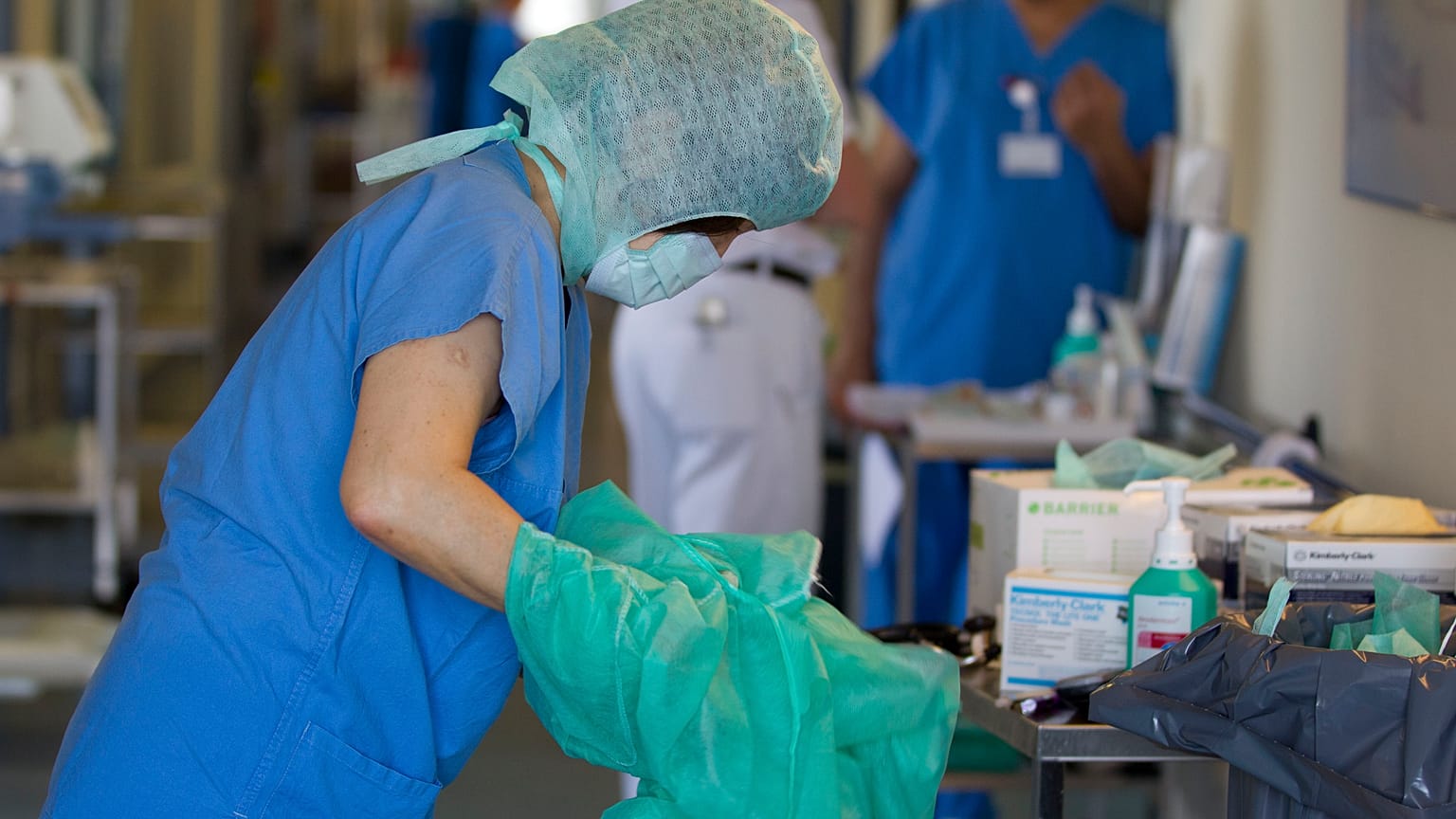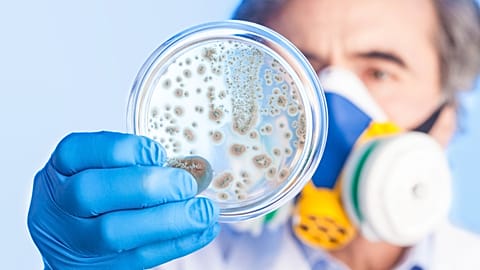Researchers have found that chlorine-based disinfectant does not kill a superbug on hospital scrubs.
Bleach does not kill a bacterium that often causes illness in people who have taken antibiotics, according to a new study.
Clostridioides difficile or C. diff is the most common cause of antibiotic-associated diarrhoea globally and mainly impacts older adults in hospitals or care homes.
“With incidence of antimicrobial resistance on the rise, the threat posed by superbugs to human health is increasing,” Tina Joshi, an associate professor of molecular microbiology at the University of Plymouth in the UK, said in a statement.
“But far from demonstrating that our clinical environments are clean and safe for staff and patients, this study highlights the ability of C. diff spores to tolerate disinfection at in-use and recommended active chlorine concentrations,” Joshi said.
University of Plymouth scientists tested three in-use high concentrations of sodium hypochlorite (liquid bleach) disinfectant on three different strains of C. diff and found that bleach was no more effective than water at damaging the C. diff spores.
There was also no significant difference between water and bleach on hospital scrub fabrics which they examined with electron microscopes.
The same team had previously found that hospital gowns retained superbugs even after using the recommended amount of disinfectant.
The findings were published in the journal Microbiology, with the authors saying there is an urgent need to review current disinfection guidelines to reduce the incidence of C. diff infections.
“It shows we need disinfectants and guidelines that are fit for purpose and work in line with bacterial evolution, and the research should have significant impact on current disinfection protocols in the medical field globally,” Joshi said.
According to the European Centre for Disease Prevention and Control (ECDC), there are an estimated 7,800 fatal healthcare-associated C diff cases annually in the EU/EEA.
The researchers say that understanding the bacteria’s bleach tolerance could be important for managing antimicrobial-resistant bacteria, which are rising globally.
Antimicrobial resistance or AMR occurs when bacteria, fungi, and parasites adapt to withstand antimicrobials meant to kill them.
“This resistance is the result of inappropriate and excessive use of antimicrobials in people, animals and farming, as well as inadequate infection prevention and control measures in healthcare settings,” the ECDC said.
The EU has set several goals to tackle antimicrobial resistance by 2030 one of which is reducing the total consumption of antibiotics by 20 per cent.
“With AMR increasing globally, the need to find those answers – both for C. diff and other superbugs – has never been more pressing,” Joshi said.


















